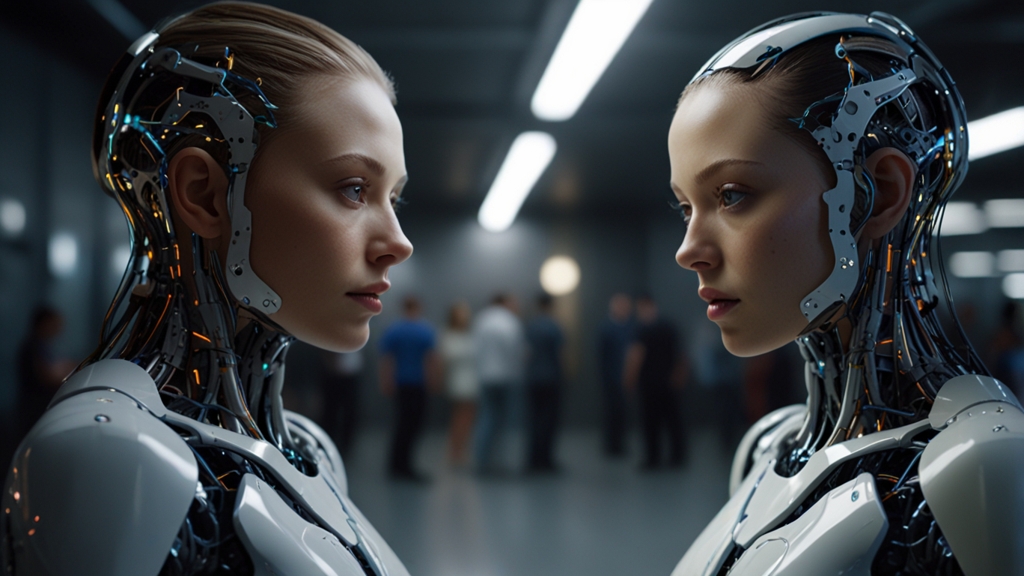David's Revolutionary Idea that Could Change Everything
In a world brimming with incremental advances, it’s not often that an idea comes along with the potential to fundamentally reshape society. David Thompson, a relatively unknown thinker until recently, has presented such an idea—an innovation that could dramatically change the way we live. From sustainable energy to global connectivity, David’s concept touches numerous facets of modern life, offering solutions to some of our most pressing challenges.
The Birth of an Idea
David’s groundbreaking idea emerged from a blend of personal curiosity and professional expertise. With a background in both engineering and social sciences, David uniquely straddled the worlds of technology and human behavior. This dual perspective enabled him to identify gaps and inefficiencies that were often overlooked by specialists focused on only one domain.
“If we can harness the untapped potential of our existing resources more efficiently, we can create a world that is not only more connected but also more sustainable,” David states emphatically.
What is the Idea?
At its core, David’s concept marries advanced grid technology with community-based initiatives. The proposal involves creating a decentralized energy network where households can produce, store, and trade energy in a blockchain-powered ecosystem. Unlike traditional power grids that are centrally controlled, this decentralized network empowers individuals and communities to manage their energy consumption and production autonomously.
The implications of such a system are staggering. Imagine a neighborhood where solar panels don’t just power individual homes but also generate surplus energy that can be sold to neighbors or stored for future use. By leveraging blockchain technology, all transactions are transparently logged, tracked, and validated without the need for intermediaries.
Sustainability and Accessibility
One of the most compelling aspects of David’s idea is its focus on sustainability. Traditional power grids often rely on fossil fuels, contributing to environmental degradation. In contrast, this decentralized network would prioritize renewable energy sources such as solar, wind, and hydroelectric power. The system’s inherent flexibility also allows it to adapt to various climates and geographical conditions.
“Sustainability isn’t just a buzzword; it’s a necessity for our survival. David’s idea offers a scalable solution that can significantly reduce our carbon footprint while providing reliable energy access to underserved communities,” says Maria Lopez, a renewable energy expert.
Economic Implications
Besides environmental benefits, David’s concept also presents substantial economic advantages. By cutting out intermediaries, consumers would save on costs associated with energy transmission and distribution. Furthermore, the ability to trade surplus energy creates a new economic model where households can generate income.
This system also promotes energy equity. In many parts of the world, access to reliable energy remains a significant barrier to development. David’s decentralized network could democratize energy access, ensuring that even remote or impoverished areas can benefit from consistent power supplies.
Challenges and the Road Ahead
While David’s idea is undeniably revolutionary, it isn’t without challenges. Technical hurdles such as energy storage efficiency, blockchain scalability, and cybersecurity are areas that require rigorous research and development. Additionally, regulatory frameworks would need to evolve to accommodate this new form of energy economy.
“No great idea comes without its challenges. However, the potential rewards far outweigh the hurdles. With collective effort and innovation, we can bring this vision to life,” David asserts optimistically.
Conclusion
David’s revolutionary idea has the potential to change everything—from how we consume energy to how we interact as communities. By decentralizing energy production and using blockchain for transaction transparency, the concept addresses critical issues of sustainability, accessibility, and economic equity. While obstacles remain, the vision is clear and compelling. As society grapples with the dual crises of environmental degradation and economic disparity, ideas like David’s offer a glimmer of hope for a brighter, more sustainable future.








